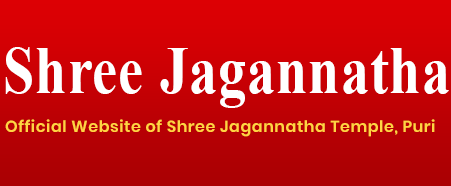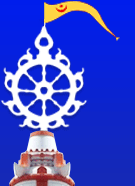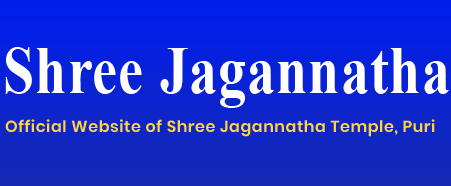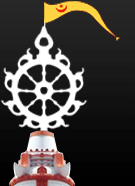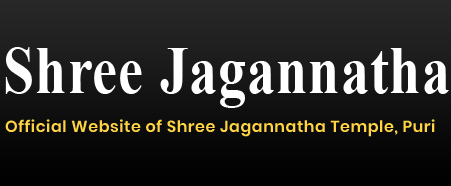LORD SUPREME >> Mahaprabhu Shree Jagannatha
Lord Jagannatha, as His very name signifies, is the Lord of the Universe (Jagat = Universe; Natha = Lord). He is also popularly known as Mahaprabhu (Maha = Great; Prabhu = Lord). The sacred scriptures of Sanatana Vaidika Dharma (popularly known as Hinduism) also refer to Him as Purushottama, The Supreme Divine Being (Purusha = Divine Being; Uttama = Supreme). The glory of Lord Jagannatha has been narrated in innumerable scriptures – from the Vedas (the earliest scriptures of mankind) to the Puranas and later literary compositions in Sanskrit and Odia languages. These scriptures leave no doubt that Lord Jagannatha is the One Omnipotent, Omnipresent and Omniscient Supreme God referred to as Paramatma (Supreme Self), Parameshwara (Supreme Lord) and Param-Brahman (Supreme Omnipresent God) in the scriptures of Sanatana Vaidika Dharma and invoked in infinite names and forms in and through diverse religious traditions and beliefs around the world. The philosophy and tradition of Lord Shree Jagannatha emphatically propound the fundamental principles of Hinduism: Ekam Sat Viprah Bahudha Vadanti (There is only one TRUTH, the Learned Ones speak about the same TRUTH in various ways) and Vasudhaiva kutumbakam (Entire humanity is the family of the One God).
According to Skanda-Purana (Vaishnava Khanda), which extensively narrates the tradition and heritage of Lord Jagannatha in the Section entitled Purushottama-kshetra Mahatmya or Utkala Khanda containing 60 chapters (3863 verses), the One Supreme Lord manifested in Shree Purushottama-kshetra (modern Puri) in four wooden (Daru) forms as Lord Balabhadra, Lord Jagannatha, Devi Subhadra and Chakra Sudarshana in the Satya-yuga of the second Chatur-yuga during the first Manvantara (the time period of Manu Swayambhuva) in the first day (Svetavaraha Kalpa) of the fifty-first year of Lord Brahma. We are now in the Kali-yuga of the 28th Chatur-yuga of the seventh Manu (Manu Vaivaswata). Thus, a period of more than six Manvantaras and 27 Chatur-yugas have gone by since the manifestation of the Lord in Purushottama-kshetra in His present (Daru) forms. According to the sacred scriptures, such as Shreemad Bhagavata Mahapurana, there are 71 Chatur-yugas in each Manvantara and in these Yugas, various Avataras (Divine Incarnations) of the Supreme Lord emanate from Him and, after performing Their Divine Leela for re-establishing Dharma,they merge back in Him. Lord Shree Jagannatha, therefore, eternally present in Purushottama-kshetra through all these Yugas, is not an Avatara. He is the Avatari – the Supreme Omnipresent God from whom all Divine Incarnations manifest in different ages according to His Divine Will. In the 28th Chapter of Skanda-Purana Purushottama-kshetra Mahatmya, Lord Brahma Himself reveals the true identity of Lord Shree Jagannatha when He instructs King Indradyumna with these words:
“Thinking it is a wooden image, O pre-eminent King, let there not be the idea in you that this is a mere image; this is verily the form of Supreme Brahman (Supreme Omnipresent God). As Param-Brahman takes away all sorrows and confers eternal bliss, He is known as Daru. According to the four Vedas therefore, the Lord is manifest in the form of Daru (sacred wood). He is the Creator of the entire Universe. He has also created Himself.” (Chapter 28, verses 39-41)
The Skanda-Purana further states that the Supreme Lord will remain in this Daru form from this the fifty-first year of Lord Brahma till the completion of Lord Brahma’s life-time of 100 years (that is,for the entire period of second Parardha). The scripture also states that during the first Parardha of Lord Brahma (that is, during the first 50 years of Lord Brahma’s life-time), the very same Supreme Lord was present in Shree Purushottama-kshetra in the Divine Neelamani Vigraha (Blue-sapphire gem-stone) Form of Lord Madhava (Lord Narayana-Vishnu-Jagannatha), Devi Mahalakshmi (Devi Subhadra), Lord Sesha Ananta (Lord Balabhadra)and Lord Sudarshana (Chakra Sudarshana).Similar narration is also found in other sacred scriptures. In a nutshell, therefore, the scriptures make it amply clear that Lord Jagannatha is none other than the One Supreme God on this earthly plane.
In His eternal Abode in Shree Jagannatha Temple in Puri, the Supreme Lord in His Four Daru Forms of Lord Balabhadra, Lord Jagannatha, Devi Subhadra and Chakra Sudarshan (Chaturdha Daru-Vigraha) are invoked and worshipped in a myriad of different ways. His rituals and festivals contain a syncretic blend of diverse modes of worship – from the Vedic and Tantric to the rituals of ancient tribal communities…
Read More
For devotees of Lord Krishna, Lord Jagannatha is Lord Krishna, Lord Balabhadra is Lord Balarama (Lord Krishna’s elder brother) and Devi Subhadra is Lord Krishna’s sister Subhadra. For devotees of Lord Rama, Lord Jagannatha is Lord Rama, Lord Balabhadra is Lord Lakshmana (younger brother of Lord Rama) and Devi Subhadra is Devi Sita (Divine Consort of Lord Rama). According to Saiva tradition, on the other hand, Lord Jagannatha is worshipped as Shiva-Bhairava-Ekapada, Lord Balabhadra as Ananta Naaga or Sesha Ananta and Devi Subhadra as Shakti. Tantra and Shakta traditions invoke Lord Jagannatha as Mahabhairava, Lord Balabhadra as Rudra and Devi Subhadra as Durga. In the Pancharatra tradition of the 12th century CE Philosopher-Saint Shree Ramanujacharya, Lord Jagannatha is worshipped as Shree Krishna, Lord Balabhadra as Lord Shiva, Devi Subhadra as Ekanamsa Durga and Chakra Sudarshana as Lord Nrisimha. In the Pancha-Devata tradition of worship, Lord Jagannatha Himself is invoked in five distinct Divine Forms, namely, as Lord Narayana when on the Ratna-singhasana (bejewelled Throne) in the Garbha-griha (sanctum-sanctorum) of the Temple, as Lord Rudra during Nabalakebara, as Lord Gajanana during Snana-yatra, as Lord Surya-Narayana during Ratha-yatra and as Devi Durga during Sayana-yatra. In Skanda-purana it is mentioned that the Lords represent the four Vedas: Lord Balabhadra symbolizes Rigveda, Devi Subhadra – Yajurveda, Lord Jagannatha – Samaveda and Chakra Sudarshana – Atharvaveda; and that the Lords also symbolize the four parts of Sacred Pranava (Omkara).
The great Acharyas and founders of the various Vedic Sampradayas (religious and philosophical traditions), namely, Bhagvatapada Adi Shankaracharya, Shree Ramanujacharya, Shree Madhvacharya, Shree Nimbarkacharya, Shree Vishnu Swami and Shree Chaitanya – all of them visited Puri and invoked the Lords in the tradition of their own Sampradayas. In the worship of the Lords, there is thus a harmonious confluence of the various schools of Vedanta, namely, Advaita, Vishishtadvaita, Dvaita, Shuddhadvaita, Dvaitadvaita and Achintyabhedabheda. The Lords are invoked as Saguna-Sakara (God with form and attributes), Nirguna Sakara (God with form but without attributes) and also as Nirguna Nirakara (God without form or attributes) depending upon the religious belief and faith of the devotee. The founder of Sikh religion, Guru Nanak, and Sufi Saint Kabir also visited Puri and invoked Lord Jagannatha in their own tradition. Some scholars are of the view that Jesus Christ also visited Puri. Buddhist scholars and saints have accepted the Lords as the Buddhist Tri-Ratna: Lord Jagannatha as Buddha, Lord Balabhadra as Dharma and Devi Subhadra as Sangha. Likewise, the Lords have been identified with the Jain Tri-Ratna: Lord Jagannatha as Samyak-drishti (Perfect Vision), Lord Balabhadra as Samyak-jnana (Perfect Knowledge) and Devi Subhadra as Samyak-charitra (Perfect Conduct).
We thus find that Lord Jagannatha is invoked and worshipped by devotees belonging to diverse religious faiths and traditions, each in their own way. This universal and all-inclusive all-encompassing dimension of Lord Jagannatha is pointed out by Lord Brahma at the time of the first installation of the Lords in the magnificent Temple built by King Indradyumna in Shree Purushottama-kshetra in the Satya-yuga of the first Manvantara when He enlightens the King with the following words:
“This Lord pervades all forms and permeates all mantras. In whatever way He is worshipped by anyone, accordingly does He confer fruits on him. O King, just as well-purified gold when shaped according to one’s choice gets this or that name in this world and brings about this or that satisfaction, O King, with such glory the Lord has become manifest here.” (Skanda-Purana, Purushottama-kshetra Mahatmya, Chapter 28, verses 47-50).
It is a well-established principle of Sanatana Vaidika Dharma followed in every Temple that the Presiding Deity never leaves His throne or the Temple and that it is the Utsava-Vigraha or Chalanti-Pratima (smaller Deity representing the Presiding Deity) who is taken out of the Temple in traditional procession during annual festivals. Lord Jagannatha, however,Himself created an exception to this general rule. Being the Lord of all beings in the Universe, He desired to leave His Ratna-singhasana (bejewelledThrone) and come out of the Temple once in every year during the sacred festival of Ratha-yatra so that all beings (human and non-human) may have His darshan and receive His Grace without any distinction whatsoever. Once again, on the occasion of Snana-yatra, commemorating the first Divine manifestation of the Lords in Daru Forms, the Lords come out of the Temple and are enthroned on the Snana-vedi within the Temple precincts so that one and all, without any distinction, may have His darshan. Similarly, there is no distinction made of caste, creed, colour, religion or nationality when partaking Mahaprasada, the sacred bhoga offerings made to Lord Jagannatha which are considered as sacred as the Lord Himself.
While narrating the first manifestation of the Lords in Daru forms in the first Manvantara, Skanda-Purana reveals that it was a sacred Particle of the Divine Form of Supreme Lord Vishnu which manifested as the Celestial Tree mysteriously floating upon the sea in Shree Purusottama-kshetra and that the old carpenter who carved the images of the Lords out of that Celestial Tree was none other than the Supreme Lord Himself. The images of the Lords carved out by the Divine Carpenter are indeedquite inexplicable, open to an infinite variety of interpretations depending upon the belief and devotion of the seeker. The truth is however revealed in the profound declarations of the Upanishads which throw light upon this incomprehensible appearance of the Lords in Daru Forms. Shvetasvetara Upanishad proclaims the Vedic conception of Purusham Mahantam (The Supreme Divine Being) in these words:
“He (The Supreme Divine Being) is without hands, feet (and yet) moves and grasps; He sees(though) without eyes; He hears (though) without ears. He knows whatever is to be known; and of Him there is no knower. They speak of Him as the First, the Purusha and the Great.” (Chapter 3, verse 19).
Sanatana Vaidika Dharma
Purushottama
Vedas
The word Veda is derived from the Sanskrit verbal root “vid”; and is generally translated as “the treasure of knowledge” or “the source or means of knowledge”. This knowledge, eternal and universal, is called A-Paurusheya (Not-man-made) because it wasrevealed by the Supreme Lord Himself to the Vedic Seers (Rishis(Chapter 28, verses 39-41)) in their deepest state of meditation or God-Realisation. This supreme knowledge was compiled in ancient times by Maharshi Vedavyasa in four parts, namely, (1) Rigveda, (2) Yajurveda, (3) Samaveda and (4) Atharvaveda. They are the most sacred and sacrosanct scriptures of Sanatana Vaidika Dharma and constitutes its very foundation.
Rigveda is the earliest religious, philosophical and spiritual literature of mankind. The glory of Lord Jagannatha-Purushottama is mentioned in Rigveda in the following words:
“Ado yaddāru plavate sindhoh pāre apūrusam,
Tadā rabhasva durhano tena gaccha parastavam”
(Chap X – 155-3)
“There exists on the sea–shore in a far-off place the Image of a Deity of the name Purushottama, which is made of wood, floating as it were, upon the sea. O ye, by worshipping that wood indestructible, attain the supreme place of the Vaishnavite.”
The verse ‘– ado yad daru plavate sindhoh pare apurusam’ — has been interpreted by Sayanacharya (1315-1387 CE), one of the most well-known commentators of Rig Veda as well as other eminent Vedic scholars to refer to ‘darumayam Purusottamakhyam devata-sariram’ (Purushottama) floating on the sea”
The glory of Lord Jagannatha-Purushottama is also mentioned in the Paippalada Samhita of Atharvaveda (VI-8/7) in these words:
(Quote here relevant Sanskrit verses with English translation)
Puranas
The sacred Purana scriptures composed by Maharshi Vedavyasa amplify and illustrate the supreme Truth and Knowledge contained in the Vedas by narrating the glory of all Gods and Godesses of Sanatana Vaidika Dharma and the spiritual, philosophical, religious and cultural heritage of India along with a chronological exposition of its most ancient history. Purana literally means ancient. There are 18main Puranas.The following Puranas narrate the glory of Lord Jagannatha and Purushottama-kshetra:
- Brahma Purana
- Skanda Purana
- Matsya Purana
- Vishnu Purana
- Agni Purana
- Padma Purana
- Narada Purana
Brahma-Purana is one of the most ancient among the Puranas and it contains about 1000 verses in the Section entitled “Purushottama-kshetra Mahatmya” narrating the glory of Lord Jagannatha. The subject-matter is however more exhaustively dealt with in the Skanda-Purana which contains a total of 81,100 stanzas and is the most voluminous scripture among the Puranas. Skanda Purana (Vaishnava-khanda) narrates the glory of Lord Jagannatha in the Section entitled “Purushottama-kshetra Mahatmya” containing 60 Chapters (3863 verses).
Sanskrit
The following scriptures and other literature in Sanskrit language narrate the glory of Lord Jagannatha:
- Kapila Samhita
- Barhaspatya Sutram
- Tirthachintamani
- Niladrimahodaya
- Purushottama Chandrika
- Rudrayamala
- Tautrayamala
- Purushottama Tattva
- Saubhagya Manjusha
- Bamadeb Samhita
Odia
The glory of Lord Jagannatha is mentioned in various Odia compositions including:
- Mahabharata (Musaliparva) of Sarala Das
- Deula Tola of Nilambara Das
- Deula Tola of Sisukrushna Das
- Mahabhavaprakasa(Chap-III) of Kanhai Khuntia
- Daru Brahmagita of Jagannatha Dasa
Daru
Skanda-Purana Purushottama-kshetra Mahatmya reveals that a Sacred Particle from the Divine Body of Supreme God Vishnu manifested as the Celestial Tree floating upon the sea in Purushottama-kshetra and it was out of this Celestial Tree that the Divine Carpenter (the Supreme Lord Himself) carved out the four Daru Images of the Lord (Chaturdha Daru Vigrahas). While installing the Daru Images in the very first Temple of Lord Jagannatha built by King Indradyumna, Lord Brahma explained that the Supreme Lord assumed Daru Forms to remove all sorrow and to confer eternal bliss (Da = Bestower of Eternal Supreme Bliss — “akhandanandadanatah”; Ru = Remover of all sorrow – “khandanatsarva-dukhanam”; Chapter 28, verses 39-41).
Purushottama-kshetra Mahatmya, at the very outset, states that the Supreme Lord manifested in Daru Forms to perform His Divine Leela like a human being (“…daravatanuh shreesho manushaleelaya”; Chapter 1, verse 3). At the very first manifestation of the Lord in wooden forms, a Divine Voice instructed King Indradyumna to immediately cover the wooden images by sacred coverings. According to ancient tradition, therefore, as mentioned in the Madala Panji (Temple chronicle), the Daru Forms of the Lord are made up of seven sheaths or coverings (saptavarana), from the innermost wooden form to the cloth covering on the exterior, which correspond to the Vedic conception of the gross human body consisting of sapta-dhatus (that is, seven different components – from the marrow, bone, flesh and blood to the outer skin). Moreover, just as beyond all the gross and subtle coverings of the human body resides the Jivatma (the individual soul) – the Divine Spark which enlivens the whole body – so also in the Daru Forms of the Lord, beyond all the coverings, there is the incomprehensible, unknowable Brahman (the Supreme Divinity) in the innermost heart-cavity of the sacred Images. As there is constant change in the human body, so also in the Daru Forms of the Lord there is constant change which is evidenced in the secret Anabasara rituals of the Lords every year before Ratha-yatra. Just as the ever-changing perishable human body decays and dies but the Jivatma (the individual soul) transmigrates to another body to continue its evolutionary journey, so also in the tradition of Lord Jagannatha whenever there is an extra month of Ashadha, the Lord assumes new Daru Forms abandoning the old Forms in the unique ritualistic ceremony called Nabakalebara. Even the daily rituals and annual festivities of the Lord are like those of a human being or rather a Supreme Emperor among all mankind. The glory of Lord Jagannatha is indeed unique and distinctive amongst all the religious traditions of the world.
Satya Yuga
According to Vedic tradition, Satya-yuga (also known as Kreta-yuga) is the first Yuga (Age) among the four Yugas in the creation cycle of the Universe.
Chatur-yuga
Chatur-Yuga or Maha-yuga means the four Yugas (Ages) of the Vedic time-period of the cycle of creation of the Universe, namely: (1) Satya-yuga (2) Treta-yuga, (3) Dwapara-yuga and (4) Kali-yuga. According to scriptures, such as, Shreemad Bhagavata Mahapurana and other Puranas and Jyotisha Shastra, the Vedic time-period calculation of the Yugas is as follows: –
Kali-yuga = 4,32,000 human years
Dwapara-yuga = 8,64,000 human years
Treta-yuga = 12,96,000 human years
Satya-yuga = 17,28,000 human years
One Chatur-yugatherefore denotes 43,20,000 human years.
Manvantara
Manvantaras are the Vedic time-period of the Manus, the “mind-born” sons of Lord Brahma. One Manvantara consists of 71 Chatur-yugas or 30,67,20,000 human years. There are 14 Manus ruling each Manvantara during the period of one day (Kalpa) of Lord Brahma and they appear in the following order: – (1) Swayambhuva (2) Swarochisha (3) Uttama (4) Tamasa (5) Raivata (6) Chakshusha (7) Vaivasvata (8) Savarni (9) Daksha Savarni (10) Brahma Savarni (11) Dharma Savarni (12) Rudra Savarni (13) Roucha Savarni and (14) Indra Savarni.
Svetavaraha Kalpa
One day of Lord Brahma is known as one Kalpa. The name of the present Kalpa is Svetavaraha. One Kalpa consists of 14 Manvantaras or 4129,40,80,000 human years. The day of Brahma is followed by an equally long night when there is complete dissolution of the entire creation.
Lord Brahma
According to Sanatana Vaidika Dharma, the One Supreme God has manifested as (1) Lord Brahma (The Creator), (2) Lord Vishnu (The Preserver or Sustainer) and (3) Lord Maheshwara-Shiva (The Destroyer).
Shreemad Bhagavata Mahapurana
Shreemad Bhagvata Mahapurana consisting of 18,000 verses composed by Maharshi Vedavyasa is one of the most sacred and popular scriptures of Hinduism.
Avataras
As stated in the scriptures of Sanatana Vaidika Dharma, Avataras are Divine Incarnations of the One Supreme God and they manifest in different Yugas (Ages) according to His Divine Will. In Shremad Bhagavad Gita (Chapter 4, verses 7 & 8), the Supreme Lord proclaims that whenever there is decay of dharma (“yada-yada hi dharmasya glanir bhavati”) and rise of adharma (“abhyutthanam adharmasya”), He incarnates Himself age after age (“tadatmanam srujamyaham”, “sambhavami yuge-yuge”) for protecting the good (“paritranaya sadhunam”), destroying the wicked (“vinashaya ca dushkritam”) and for establishing dharma (“dharma sansthapanarthaya”).
Leela
The sacred manifestation of the Supreme God and His Incarnations with all Their divine activities is known as Leela.
(Chapter 28, verses 39-41)
(Quote here Sanskrit verses 39,40 & 41)
Parardha
50 years of Lord Brahma’s life is known as Parardha. His divine life consists of two Parardhas. The life-time of Lord Brahma is 100 Brahma years. Thereafter, the Supreme Lord manifests a new Lord Brahma.
Upanishads
Each of the four Sacred Vedas contain four parts, namely: (1) Mantras – containing hymns in praise of Vedic Gods, (2) Brahmanas – instructions for performance of sacrificial rites. Both Mantras and Brahmanas portions together are also known as Karma-kanda (3) Aranyakas or Upasana-kanda which give philosophical interpretations of the rituals and deal with worship and meditation on different aspects of the Supreme Lord, and (3) Upanishads or Jnana-kanda which reveal the highest knowledge.
The Upanishads (or Vedanta, as it is also called) are indeed the quintessence of the Vedas embodying the most lucid and authentic exposition of the highest spiritual knowledge revealed by the direct spiritual experience of the Vedic Seers of Truth which has been passed on from generation to generation through ages by the Guru-shishya (Spiritual Preceptor-disciple) tradition of Sanatana Vaidika Dharma. Upanishad literally means sitting at the feet of the Spiritual Preceptor for imbibing his teachings. (Upa = near; ni = below; sad = to sit down). There are more than 108 Upanishads.
Shvetasvetara Upanishad
Shvetasvetara Upanishad is one among the 12 major Upanishads. Verse 19 in Chapter 3 speaks about the Supreme Divine Being (Purusham Mahantam) as follows:
(Quote here Sanskrit verse 19)
Similar declarations are also found in other major Upanishads, including Kaivalya Upanishad and Brihadaranyaka Upanishad.

